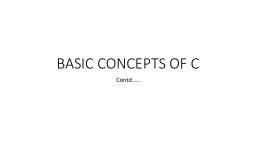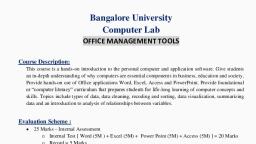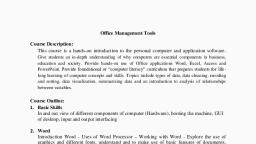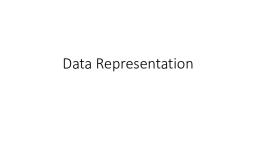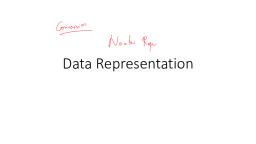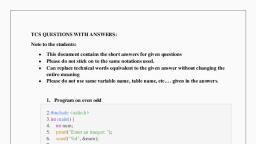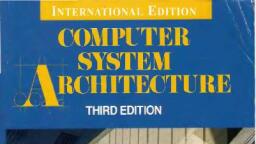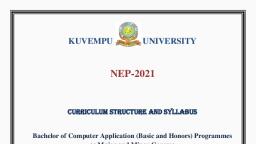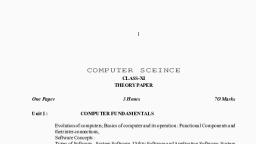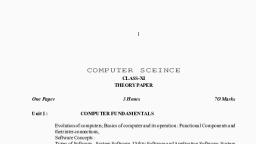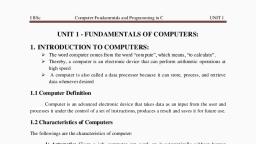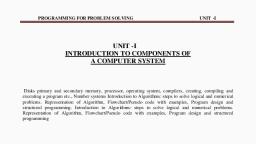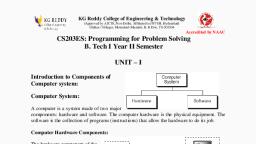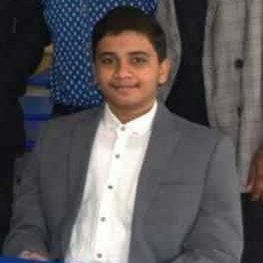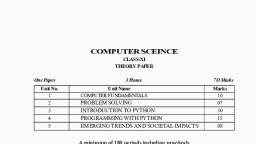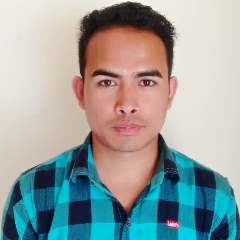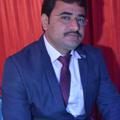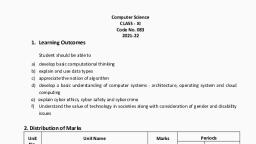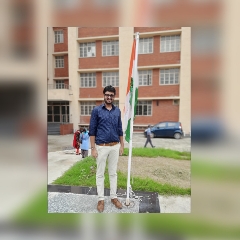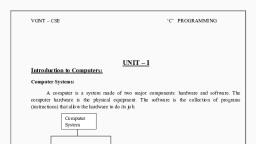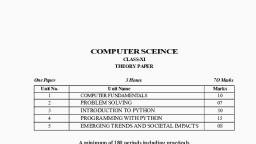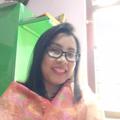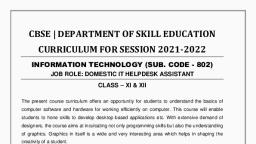Page 1 :
Open Elective courses offered by the, Department of Computer Science, Open Elective 1: Journey into Fundamentals and C Programming Concepts, Course Code: CSOE01, , Course Credits: 03, , Course Title: Journey into Fundamentals and C, Programming Concepts, Hours/Week: 03, , Total Contact Hours: 42, , Formative Assessment Marks: 30, , Exam Marks: 70, , Exam Duration: 03 Hours, , Course Outcomes (COs):, After completing this course satisfactorily, a student will be able to:, • Confidently operate Desktop Computers to carry out computational tasks, • Understand working of Hardware and Software and the importance of operating, systems, • Understand programming languages, number systems, peripheral devices,, networking, multimedia and internet concepts, • Read, understand and trace the execution of programs written in C language, • Write the C code for a given problem, • Perform input and output operations using programs in C, • Write programs that perform operations on arrays, Course Content, Content, , Ho, urs, , Unit - 1, Fundamentals of Computers: Introduction to Computers -Hardware, software- System 6Hrs, software, Application software, Utility software, Operating System; Computer Languages Machine Level, Assembly Level & High-Level Languages, Translator Programs – Assembler,, Interpreter and Compiler; Introduction to Free and Open Source Software, Definition of, Computer Virus, Types of Viruses, Use of Antivirus software; Planning a Computer Program –, Algorithmand Flowchart with Examples., , Unit - 2, Number System: Decimal Number System, Binary Number System, Octal Number System,, , 10, , Hexadecimal Number System, Number System Conversion: Binary to Decimal Conversion, Hrs, Decimal to Binary Conversion, Octal to Decimal Conversion, Decimal to Octal Conversion,, Hexadecimal to Decimal Conversion, Decimal to Hexadecimal Conversion, , Unit - 3, Basics of Operating System Definition of Operating System Objectives, types, and functions of, , 8, , Operating Systems Working with Windows Operating System: Introduction, The Desktop, Hrs, Structure of Windows, Windows Explorer, File and Folder Operations, The Search, The Recycle, Bin, Configuring the Screen, Adding or Removing New Programs using Control Panel,, Applications in windows (Paint, Notepad, WordPad, Calculator)
Page 2 :
Unit - 4, Introduction to C Programming: Over View of C; History and Features of C; Structure of a C, Program with Examples; Creating and Executing a C Program; Compilation process in C., , 8, Hrs, , C Programming Basic Concepts: C Character Set; C tokens - keywords, identifiers, constants,, and variables; Data types; Declaration & initialization of variables; Symbolic constants., Input and output with C: Formatted I/O functions - printf and scanf, control stings and escape, sequences, output specifications with printf functions; Unformatted I/O functions to read and, display single character and a string - getchar, putchar, gets and puts functions., Unit 5:, C Operators & Expressions: Arithmetic operators; Relational operators; Logical operators; 10H, Assignment operators; Increment & Decrement operators; Bitwise operators; Conditional rs, operator; Special operators; Operator Precedence and Associatively; Evaluation of arithmetic, expressions; Type conversion., Control Structures: Decision making Statements - Simple if, if_else, nested if_else, else_if ladder,, Switch-case, goto, break &continue statements; Looping Statements - Entry controlled and Exit, controlled statements, while, do-while, for loops, Nested loops., , Text Books:, 1. Pradeep K. Sinha and Priti Sinha: Computer Fundamentals, (Sixth Edition),BPBPublication, 2. E.Balgurusamy:ProgramminginANSIC(TMH), References:, 1. Kamthane:ProgrammingwithANSIandTURBOC(PearsonEducation), 2. V. Rajaraman: Programming in C (PHI –EEE), 3. S.ByronGottfried:ProgrammingwithC(TMH), 4. Kernighan&Ritche:TheCProgrammingLanguage(PHI), 5. Yashwant Kanitkar: Let usC, 6. P.B.Kottur:ProgramminginC(SapnaBookHouse)
